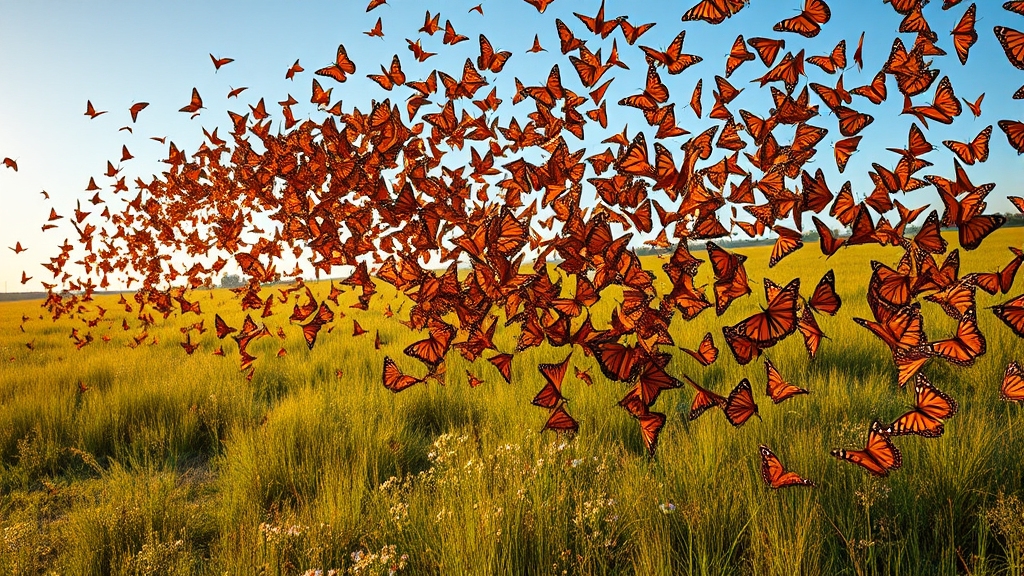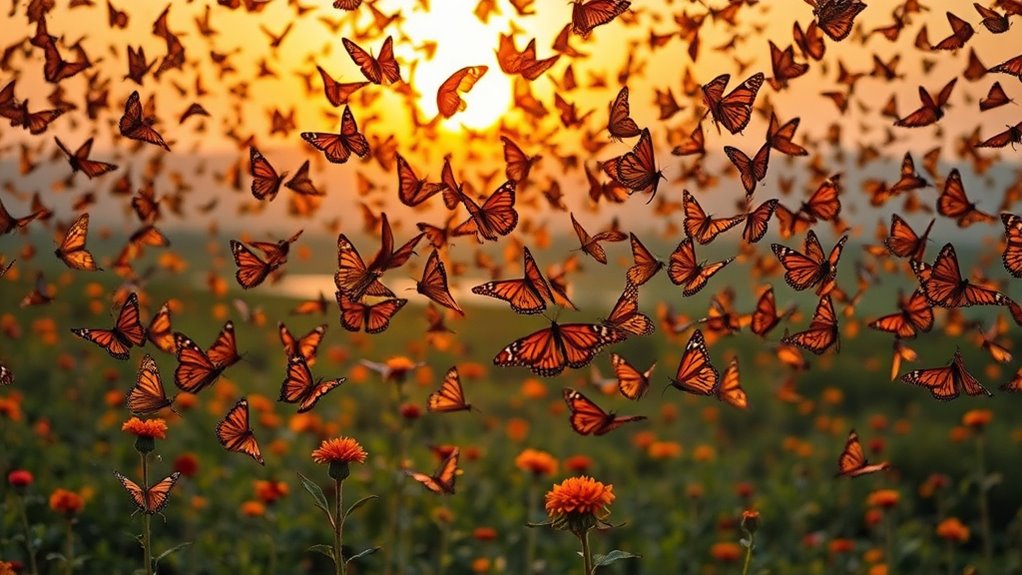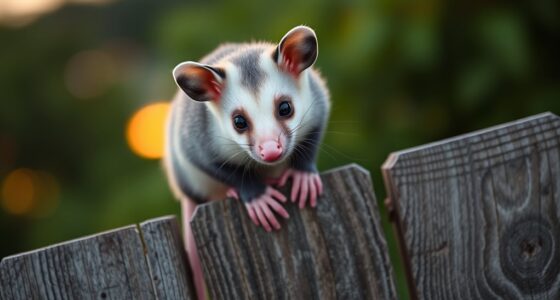The monarch butterfly migration is an incredible, delicate journey spanning thousands of miles each year. Environmental challenges like climate change, habitat loss, and extreme weather disrupt their cues and food sources, making their migration more difficult. These disruptions threaten their survival, causing population declines. Supporting habitat restoration, planting native milkweed, and advocating for climate action can help. If you want to understand more about how this remarkable migration faces threats and what you can do, keep exploring.
Key Takeaways
- Monarch migration spans thousands of miles annually, showcasing one of nature’s most extraordinary phenomena.
- Environmental challenges like climate change and habitat loss disrupt migration timing and success.
- Loss of milkweed and nectar plants reduces food sources, threatening caterpillar growth and adult survival.
- Disruptions increase vulnerability to predators and environmental stress during long-distance travel.
- Conservation efforts, habitat restoration, and planting native species are vital to support healthy monarch populations.

Every year, monarch butterflies begin an incredible migration that spans thousands of miles, showcasing one of nature’s most remarkable journeys. As you observe their flight, you might not realize the challenges they face along the way. Climate change has become a significant threat, disrupting the delicate balance of their environment. Rising temperatures and unpredictable weather patterns alter the timing of plant blooming and availability, making it harder for monarchs to find food during their journey. Extreme heat waves can also weaken these delicate creatures, reducing their lifespan and reproductive success. Meanwhile, habitat loss continues to chip away at the places they rely on for breeding and resting. Urban development, agricultural expansion, and deforestation have drastically reduced the milkweed plants that monarch caterpillars depend on, leaving fewer spots for them to grow and thrive. The loss of milkweed not only affects monarchs but also impacts the entire coastal zone ecosystem that relies on diverse plant life. Your role in understanding these threats is essential. As habitats shrink, monarchs are forced to travel longer distances to find suitable breeding grounds, increasing their vulnerability to predators and environmental stress. Climate change exacerbates this problem by shifting the migration schedule, disrupting natural cues that monarchs depend on to time their migration accurately. In some cases, monarchs arrive too early or too late, missing critical nectar sources or milkweed patches. This mismatch impacts their ability to nourish themselves and lay eggs successfully. If these trends continue, it could lead to steep declines in monarch populations, threatening their iconic migration with extinction. You can help by supporting conservation efforts that focus on restoring and protecting habitat. Plant native milkweed and nectar plants in your garden or community spaces, providing safe havens for monarchs to feed and reproduce. Advocate for policies that address climate change, aiming to reduce greenhouse gas emissions and limit further environmental damage. Every small action contributes to creating a more sustainable environment where monarchs can complete their migration safely. Educating others about the importance of these butterflies and the threats they face is equally essential. The more people who understand the impact of habitat loss and climate change, the stronger the collective effort to safeguard their future.
Frequently Asked Questions
How Do Monarch Butterflies Navigate During Migration?
You might wonder how monarch butterflies navigate during migration. They use sophisticated navigation strategies relying on their sensory mechanisms. Sun compasses help them determine direction, while their ability to sense the Earth’s magnetic field adds to their orientation skills. They also respond to environmental cues like polarized light and the landscape. These combined sensory mechanisms enable them to undertake long, challenging journeys with remarkable precision.
What Predators Do Monarch Butterflies Face During Their Journey?
Oh, the glamorous life of a monarch butterfly—facing predators who’ve perfected camouflage strategies and predator adaptations. Birds like the black-backed orioles and jays swoop in, eyeing you as a tasty snack. Some predators even mimic leaves or twigs to hide, making your journey a high-stakes game of hide-and-seek. So, during migration, you battle hawks, spiders, and wasps, all enthusiastic to turn your delicate voyage into their feast.
How Long Does the Entire Monarch Migration Typically Take?
You might wonder how long the entire monarch migration takes. Typically, the migration timing spans several months, with some journeys lasting around 2 to 3 months. During this period, the monarch lifespan varies, as the butterflies that migrate often live longer than those staying in summer habitats. You’ll find that this extended journey is a remarkable feat, showcasing nature’s incredible resilience and timing.
Are There Specific Environmental Factors That Trigger Migration?
You might think butterflies migrate on a whim, but it’s actually driven by environmental cues. Ironically, climate change and habitat loss disrupt these signals, making migration more unpredictable. Shorter days, cooler temperatures, and dwindling nectar sources trigger their journey. Yet, as human activity worsens these factors, it’s clear that their delicate migration depends on a fragile balance that’s rapidly unraveling.
What Is the Role of Milkweed in Monarch Migration?
You should know that milkweed plays a vital role in monarch migration because of its importance to monarch survival. It’s the only plant where monarch butterflies lay their eggs, and the caterpillars feed exclusively on milkweed. Without it, monarchs wouldn’t have the necessary food source for their larvae. This makes milkweed essential for supporting healthy populations and ensuring successful migration journeys for these delicate butterflies.
Conclusion
Remember, every journey begins with a single step, and the monarch butterfly’s migration reminds us that perseverance through challenges leads to incredible destinations. As these delicate creatures travel thousands of miles, they teach us the importance of resilience and hope. By protecting their path, you’re helping preserve a natural wonder. So, embrace the lesson that even the smallest efforts can make a big difference—because sometimes, the greatest journeys start with a simple flight.









